Tessa’s Recipe Rundown
TASTE: Perfect level of sweetness without being cloyingly sweet.
TEXTURE: I love how creamy this frosting is! It has a velvety, silky texture that can’t be beat.
EASE: Super easy. This frosting comes together in just a few minutes.
WHY YOU’LL LOVE THIS RECIPE: With so many customization options, your cakes and cupcakes are about to be more delicious than ever.
This post may contain affiliate links. Read our disclosure policy.
I want to teach you how to make the BEST buttercream frosting you’ve ever had.
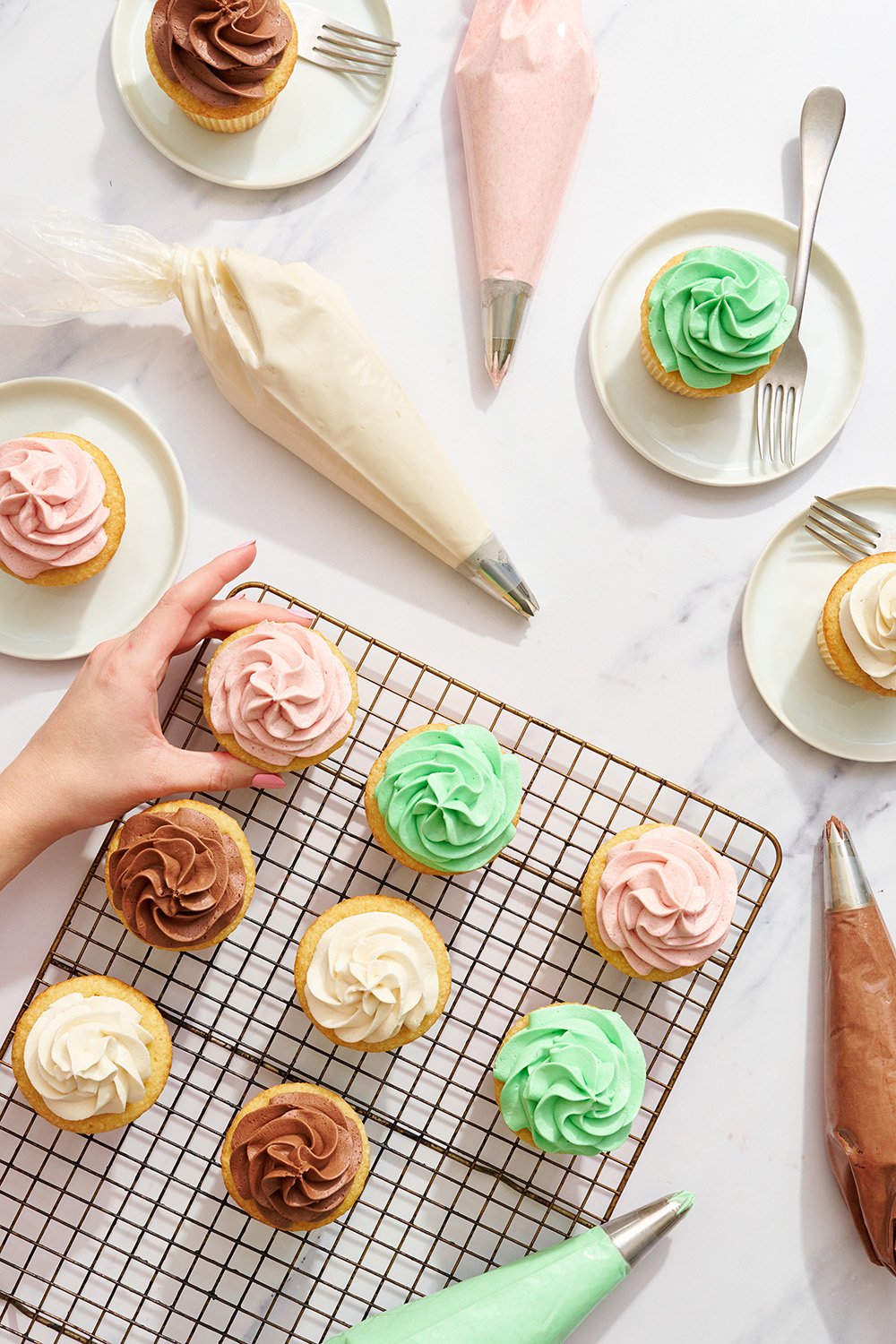
There’s nothing worse than the sickeningly sweet and artificial-tasting store-bought frosting that comes in tubs or is loaded onto grocery store birthday cakes. I usually scrape that stuff off whenever I’m served something like that – which is saying something for this sweet-toothed girl!
But not this recipe! Perfectly balanced in sweetness, silky smooth and creamy in texture, and an absolute dream to both frost with and eat.
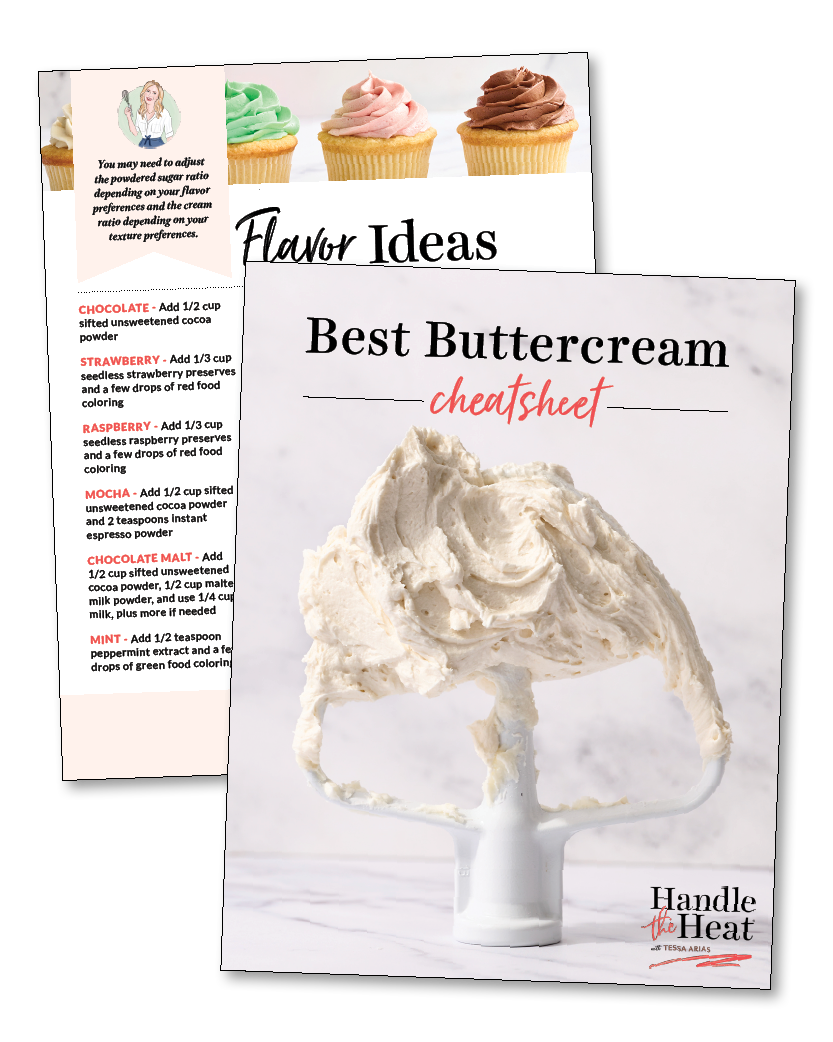
Free Buttercream Guide!
Frost your cakes and cupcakes perfectly with our Best Buttercream Guide. Trusted by 50,000+ home bakers.
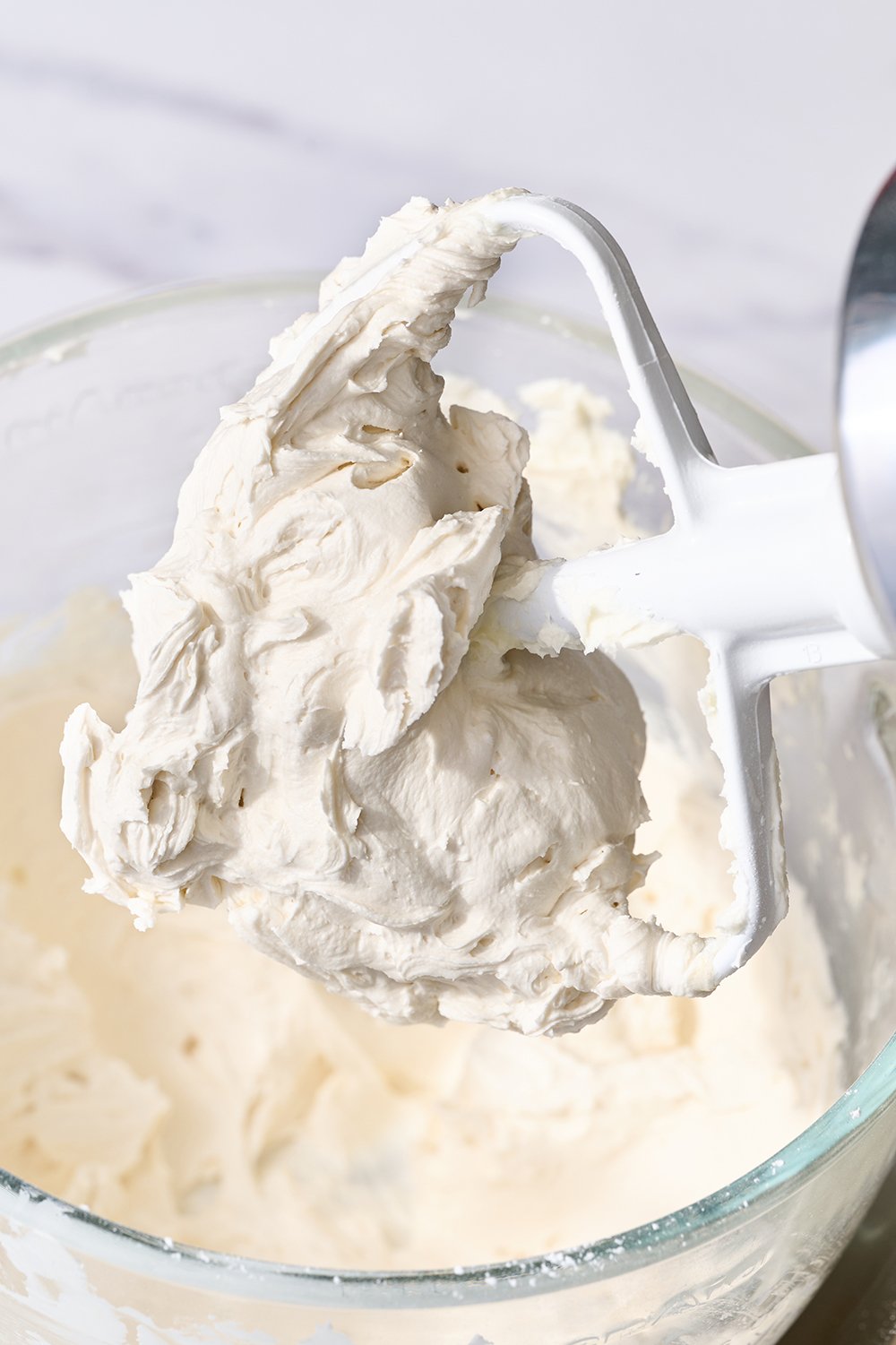
Making homemade buttercream is super easy. I’ll teach you how to make perfect buttercream step-by-step, so there’s no need to feel intimidated.
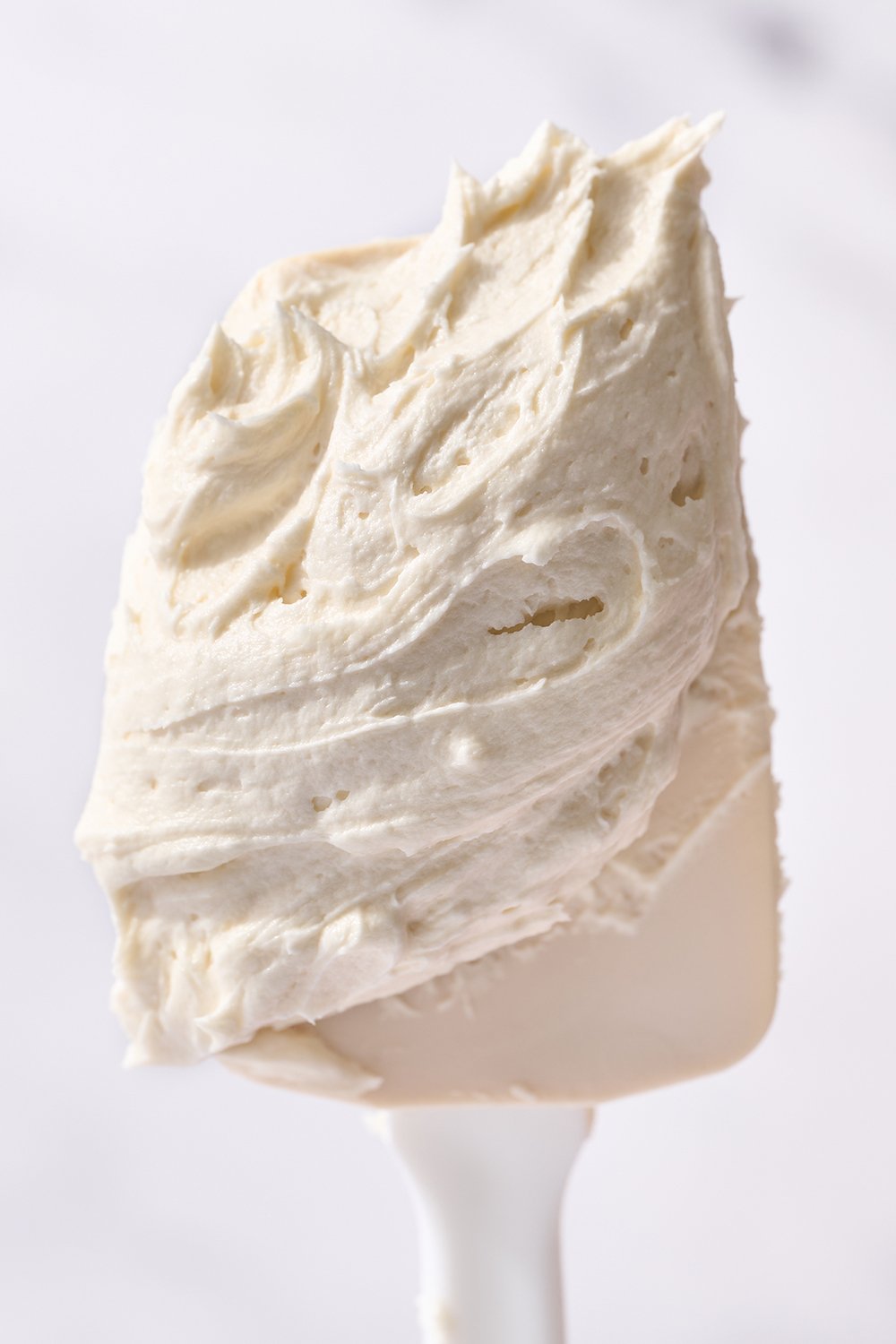
This recipe is the easiest way to level up your homemade cupcakes and cakes – and it’s so much fun to customize the flavors, too. Check out all my flavor suggestions below.
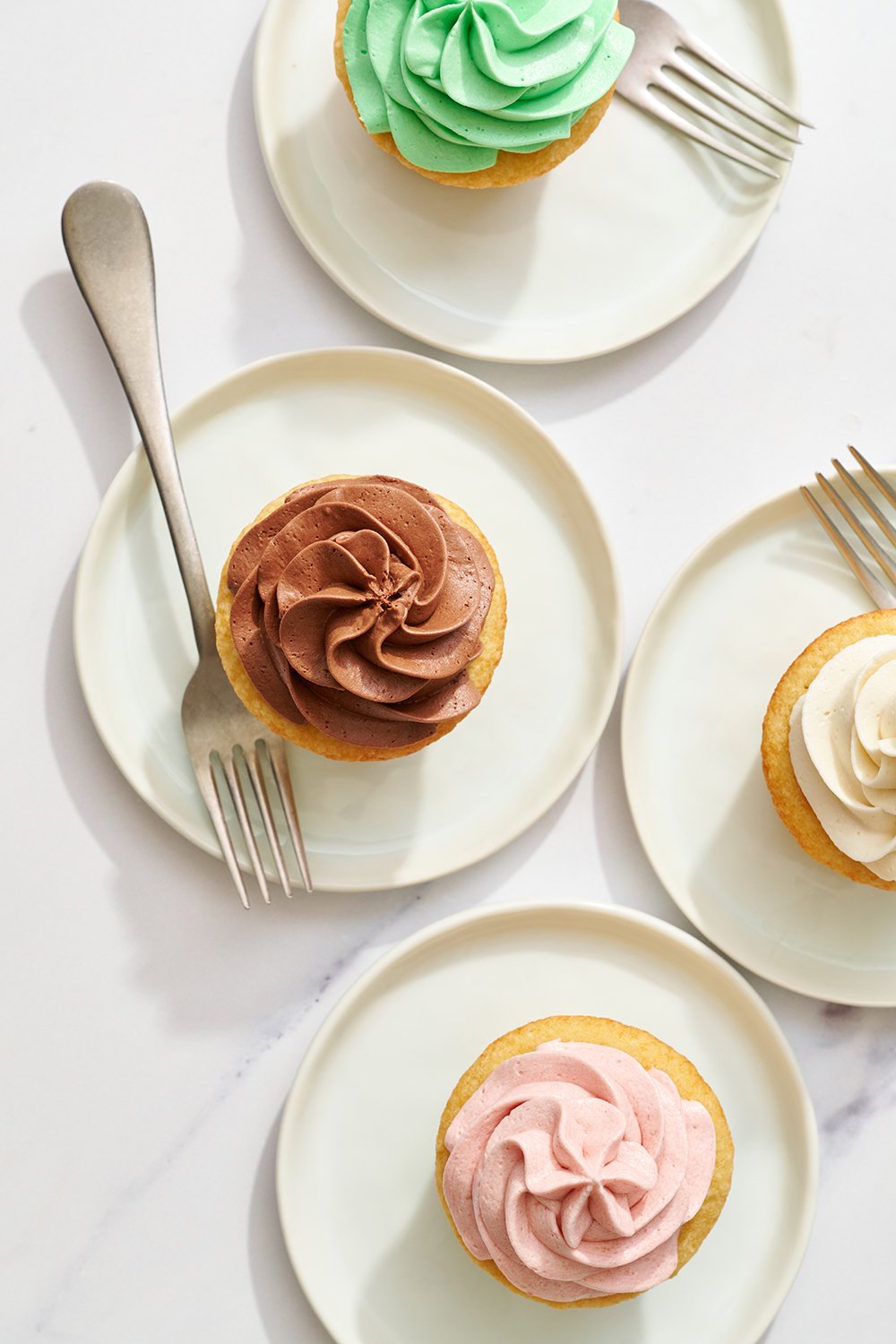

Sprinkle of Science
How to Make Buttercream Frosting
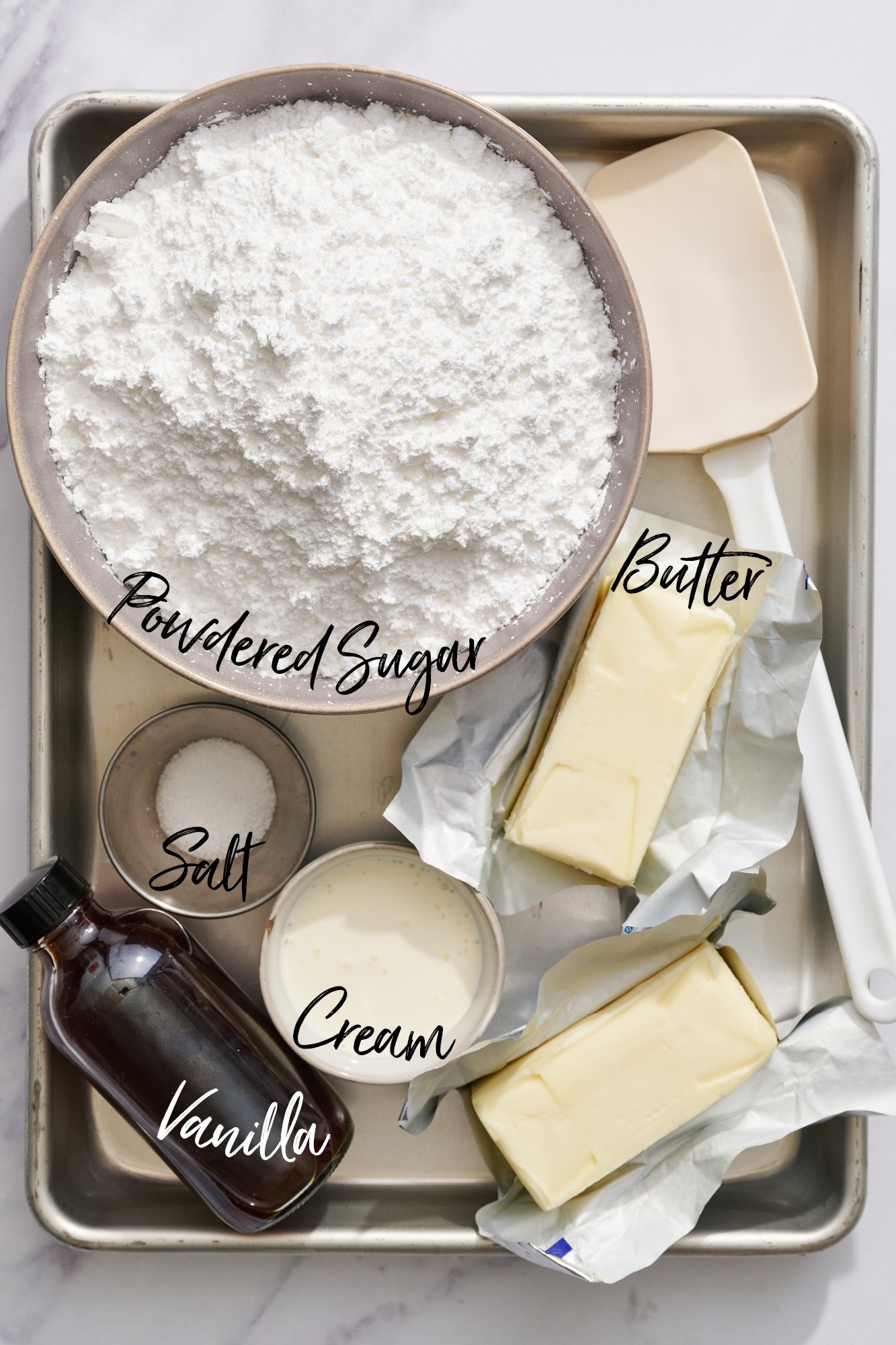
What is American Buttercream?
American-style Buttercream Frosting is made of butter and powdered sugar, whipped together with a little cream and some flavoring (such as vanilla extract).
Some American buttercream recipes will contain shortening or a combination of butter and shortening, but I prefer an all-butter mixture. Shortening leaves a slightly greasy film behind on the palate and has a slight aftertaste that I don’t prefer.
The Butter
Use high-quality butter since it’s the base of the recipe. I prefer to use unsalted butter in all my baking so I’m in control of the salt. Also, be cautious that your butter isn’t too warm or too cold. Your butter should ideally be about 67°F.
Heavy Cream (and alternatives)
You can use milk or half-and-half if that’s all you have, but I highly recommend using heavy cream if possible for its creaminess and maximum richness.
The Sugar
Always use powdered sugar in American-style buttercream – other types of sugar simply won’t work the same way.
Sift powdered sugar before adding it to your buttercream. Most recipes (including mine) are written like this: “3 cups powdered sugar, sifted” which means you measure the sugar first, then sift it before adding it in.
For the absolute smoothest buttercream frosting, I recommend investing in organic powdered sugar that contains tapioca starch instead of cornstarch because it dissolves much more readily to remove grittiness. This is the brand of organic powdered sugar I usually use, though Trader Joe’s also has a great option available too.
The Vanilla
I recommend using a high-quality pure vanilla extract (not an imitation vanilla flavor) when making a buttercream, especially if you’re making a vanilla buttercream, as it’s the star of the show.
Feel free to use vanilla bean paste instead, for a pretty speckled look and heavenly flavor.
How to Tell When Buttercream is Properly Creamed
Look for smooth, fluffy buttercream that’s light and bright in color. If your frosting still looks a bit yellow or feels dense, it’s probably not creamed enough. Check out the photos below for a visual guide:
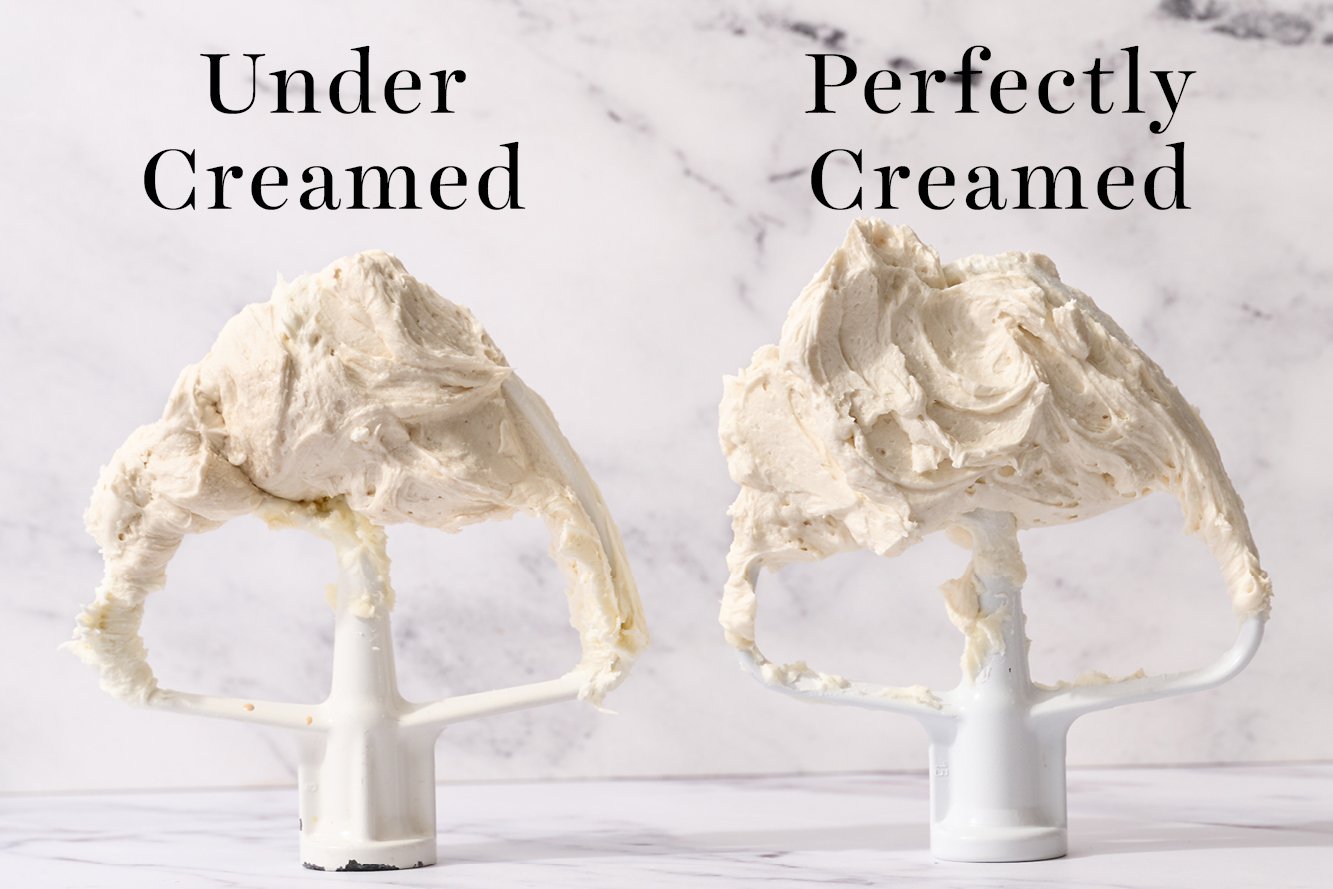

Ways to Use Buttercream Frosting:
- Fill and frost cake, like my Chocolate Cake
- Pipe onto cupcakes, like my Chocolate Cupcakes or Lemon Cupcakes
- Easily spread on cookies, like my Sugar Cookies
- Use as decoration for any treat you like!
Must-Have Tools:
Buttercream Frosting Flavor Ideas
You may need to adjust the powdered sugar ratio depending on your flavor preferences and adjust the cream ratio depending on your texture preferences.
- Chocolate: Add 1/2 cup sifted unsweetened cocoa powder.
- Strawberry: Add 1/3 cup seedless strawberry preserves and a few drops of red food coloring.
- Raspberry: Add 1/3 cup seedless raspberry preserves and a few drops of red food coloring.
- Mocha: Add 1/2 cup sifted unsweetened cocoa powder and 2 teaspoons instant espresso powder.
- Chocolate Malt: Add 1/2 cup sifted unsweetened cocoa powder, 1/2 cup malted milk powder, and use 1/4 cup milk, plus more if needed.
- Peanut Butter: Add 1 cup creamy peanut butter and reduce the powdered sugar to 2 1/2 cups.
- Irish Cream Buttercream: Use Bailey’s Irish Cream instead of cream.
- Kahlua: Add 1/2 cup sifted unsweetened cocoa powder and 1/2 cup Kahlua in place of the cream.
- Mint: Add 1/2 teaspoon of peppermint extract and a few drops of green food coloring.
- Nutella: Add 2/3 cup Nutella and reduce powdered sugar to 2 cups.
- Lemon (or any other citrus): Add 2 tablespoons lemon zest and 3 tablespoons lemon juice and increase powdered sugar to 3 1/2 cups.
- Coconut: Add 1/2 teaspoon coconut extract.
- Cinnamon: Add 1 tablespoon ground cinnamon.
- Pumpkin: Add 1/2 cup pure pumpkin puree and 1 teaspoon pumpkin pie spice, remove cream.
- Salted Caramel: Add 1/3 cup caramel sauce, remove cream, and increase salt to 1 teaspoon (if your caramel sauce isn’t salted).
- Chocolate Chip Cookie Dough: Use 3/4 cup light brown sugar in place of all powdered sugar, add 1 1/4 cups flour*, and garnish with mini chocolate chips. *To make the raw flour safer, we need to kill bacteria. Treat the flour by baking it at 350°F for 10 minutes or microwaving in 30-second bursts until it reaches 165°F. Use an instant-read thermometer to guarantee it hits the temperature at which bacteria dies. Heating the flour in the oven also toasts it slightly, giving it a slightly nutty caramelized flavor.
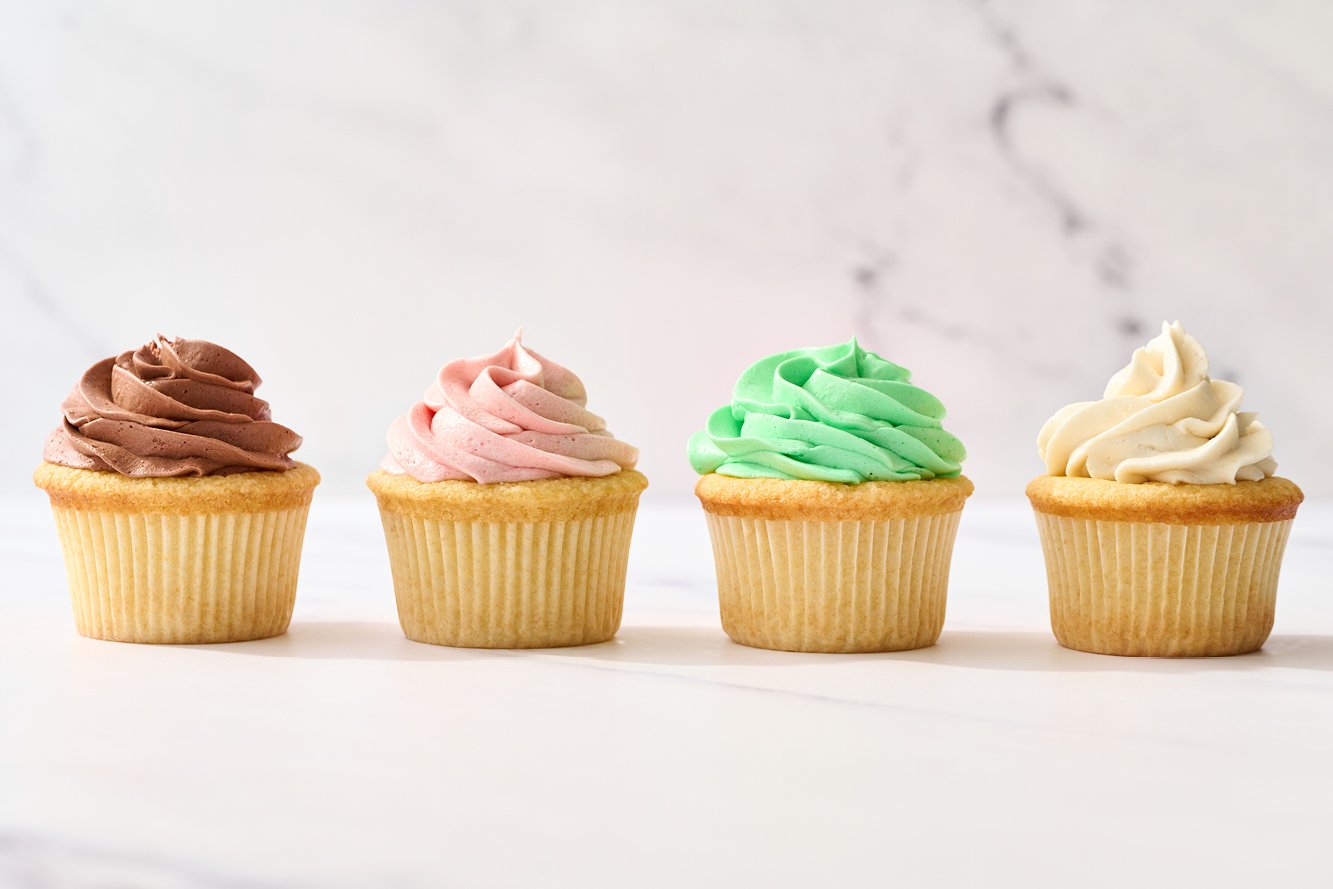
More Buttercream Recipes You’ll Love:
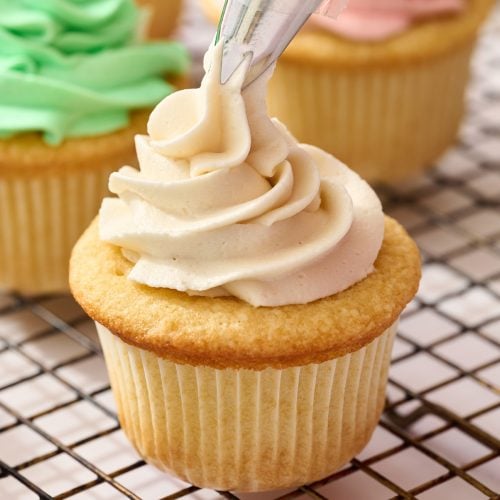
The Best Buttercream
Email This Recipe
Enter your email, and we’ll send it to your inbox.
Ingredients
- 3 cups (375 grams) powdered sugar, sifted
- 2 sticks (227 grams) unsalted butter, at a cool room temperature
- 1/4 teaspoon fine salt
- 2 teaspoons pure vanilla extract
- 1 to 2 tablespoons heavy or whipping cream
Instructions
- In the bowl of a stand mixer fitted with the paddle attachment, add the sugar and butter. Mix on low speed until well blended and then increase the speed to medium and beat for another 3 minutes.
- Add the salt, vanilla, and cream and beat on medium speed for 1 minute, adding more cream if needed.
STORAGE:
- Transfer to an airtight container and store in the fridge for up to a week or in the freezer for up to 3 months. Let come to room temperature and re-whip in the stand mixer until light and fluffy again. Add a tablespoon or 2 of powdered sugar if it needs to thicken.
Recipe Notes

The Ultimate Cookie Handbook
Learn the sweet SCIENCE of cookie baking in a fun, visual way to customize your own recipes frustration-free. Plus, my best 50+ homemade cookies!
This post was published in 2021 and updated in 2023 with new photos and recipe improvements. Photos by Joanie Simon.
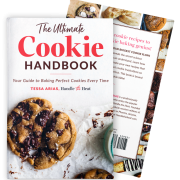
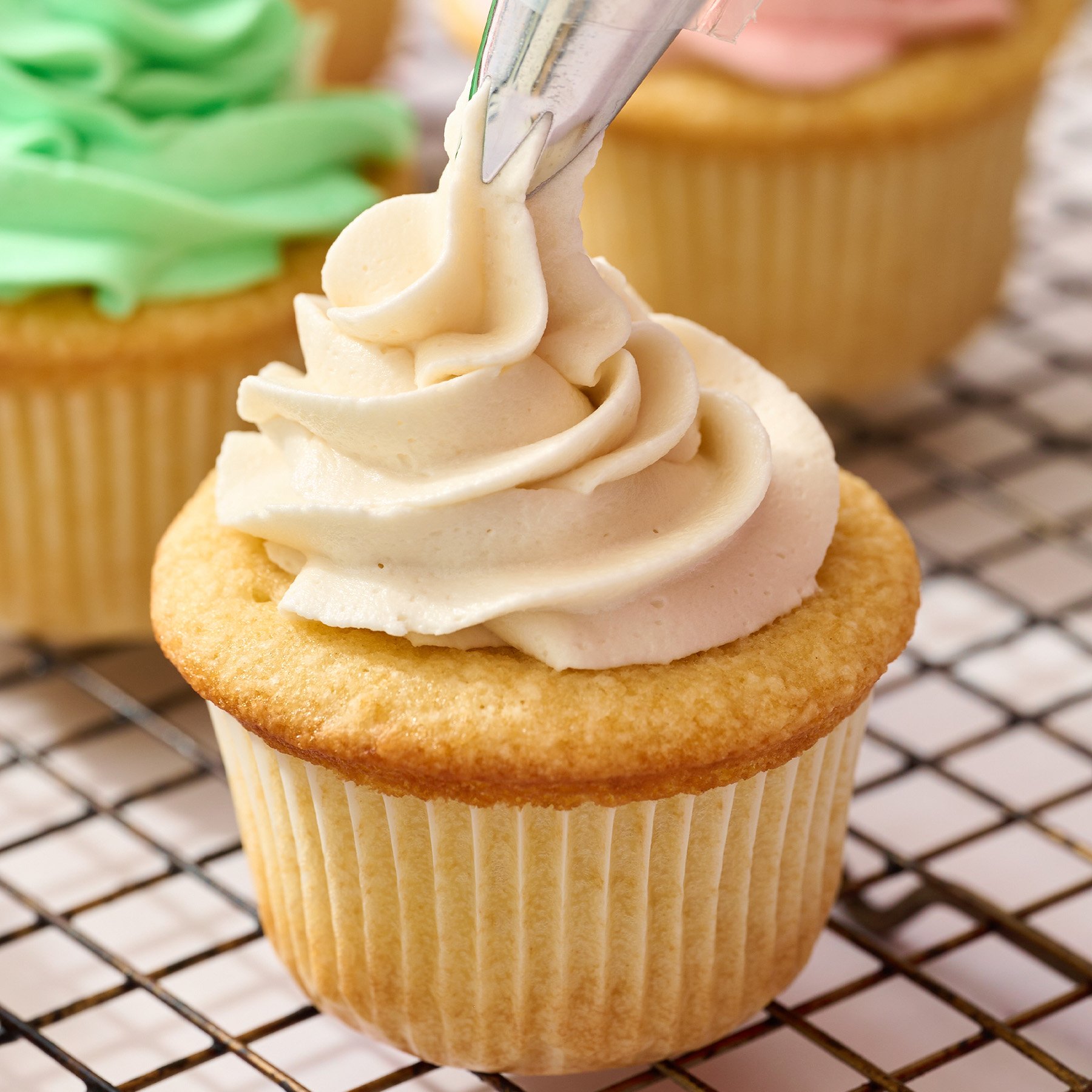
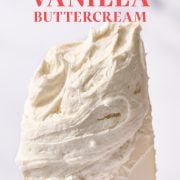
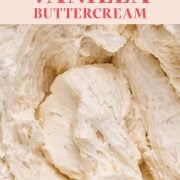
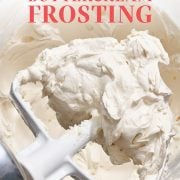
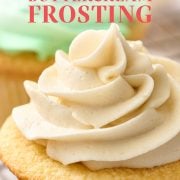

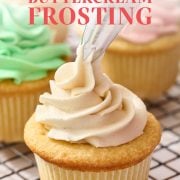
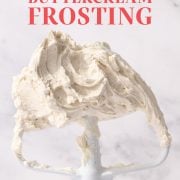
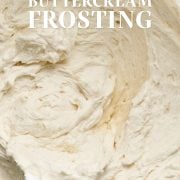
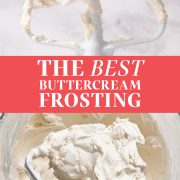
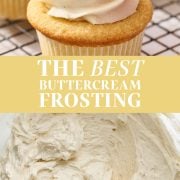
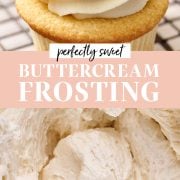
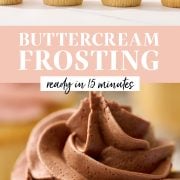

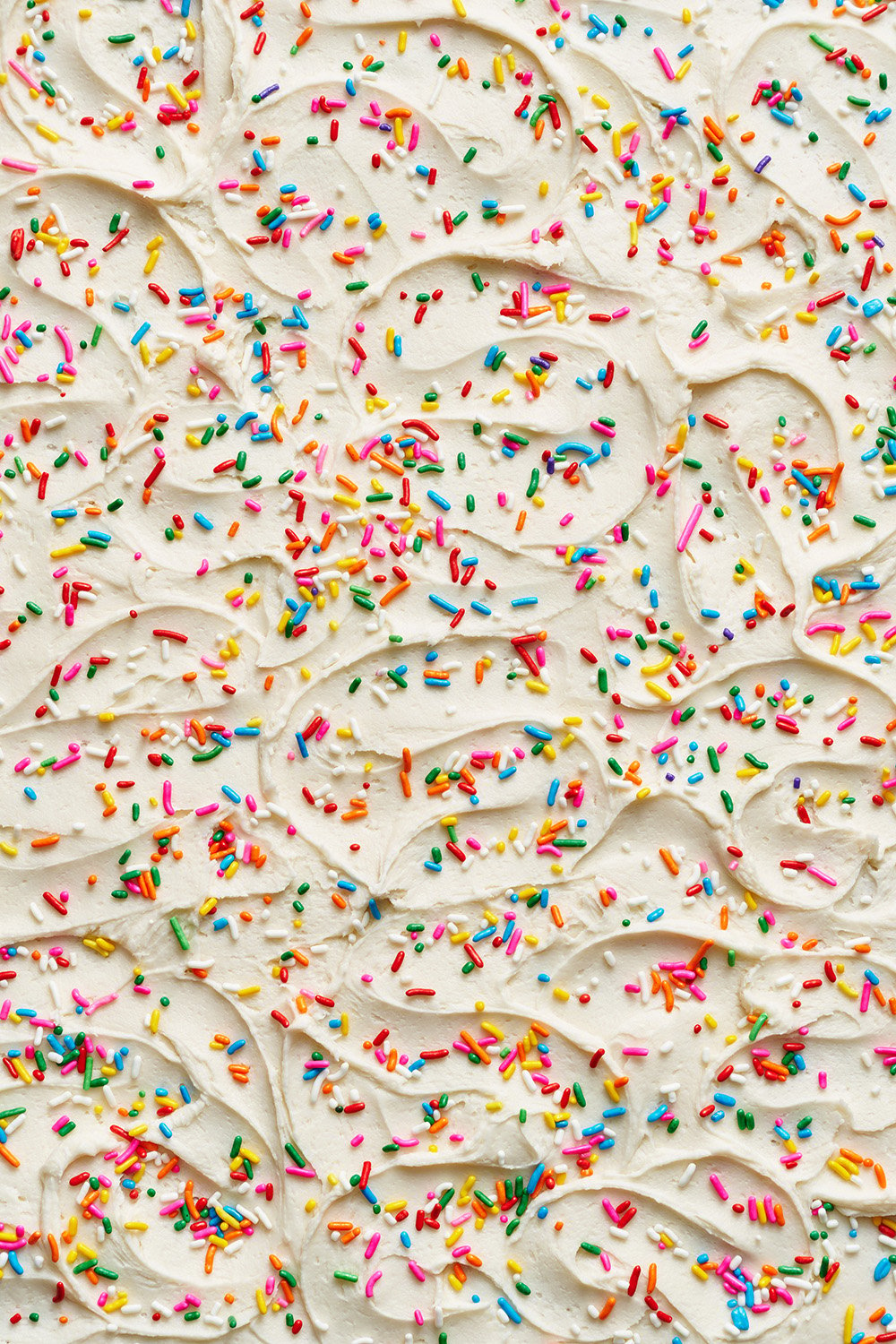
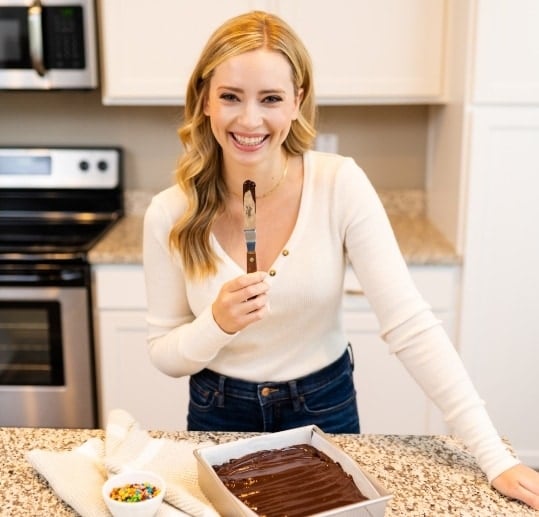

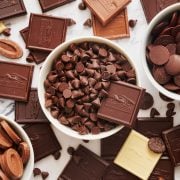
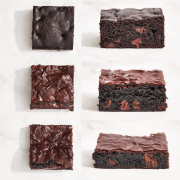
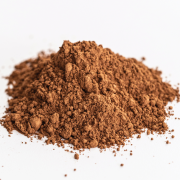
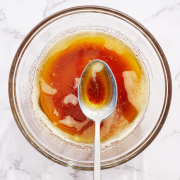
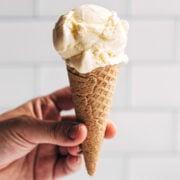
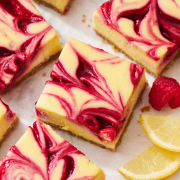
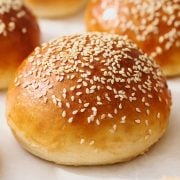
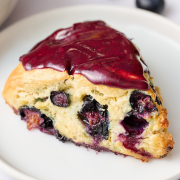








Have made this recipe many times! I love decorating with it – so stable as well as delicious!
Do I need to reduce the sugar if adding a gel coloring (that has sugar in it)?
May I ask you how I can make the buttercream feel very smooth when eating it? I tried it, sifting the sugar, but still we could taste small grains of the icing sugar. Thanks!
Yes, it should be smooth. Tessa mentions her favorite powdered sugar to use in buttercream (and why) in the baking science section above the recipe here.
Hi Tessa! I made your recipe but reducing the sugar to half of the weight of the butter (and omitting the milk/cream) otherwise too sweet for me. In this case, can it still be safely let at room temp for a long time? How long?
Also, if wanting to use your suggestions for different flavours (for e.g. 226 g butter and 113 g sugar) do the quantities of the flavour (chocolate, lemon, salted caramel, etc.) remain the same you suggested or should I change them in some way?
Thanks!
Chiara
Hi Chiara! We have not tested this recipe with your changes, but yes, you would need to make adjustments to the measurements listed for the different flavors as they were tested using the recipe as written. Buttercream can typically sit at room temp for about two days because the high amount of fat and minimal amount of milk/cream keeps it from spoiling; however, it all depends on your kitchen climate. I would personally recommend refrigerating the buttercream until about an hour or so (again, it depends on your kitchen climate) before you’re ready to use it, and rewhip it in the mixer.
Thanks a lot! And once used to frost goods, I take it can still at room temp again only for a couple of days? Or does the reduce amount of sugar (half dose of the butter) makes it less stable and safe at room temp?
Is the the higher sugar or the higher fat in butter that allows it to be safe at room temp?
Correct. After frosting goods, the time still remains the same. For best results, I wouldn’t recommend reducing the sugar in our recipe; however, as I mentioned, it’s the high amount of fat that keeps it from spoiling.
This turned out fantastic! Your tip of the butter being 67 degrees was SO helpful!!!
If you need to thin this frosting down, I recommend using a little milk instead of heavy cream. The cream turns into more butter. The consistency holds together better with milk. I love the recipe, though.
Hi Tessa! Amongs all different buttercreams which one would you suggest for cookies that need to be packed (therefore a buttercream that sets and crusts) but without being as sweet as the american buttercream? Thank you
Hi Chiara! I might recommend using an icing rather than a buttercream, as American buttercreams like this may not fully set. Here is the link to Tessa’s sugar cookie with icing recipe. I hope this helps!
Can I use coconut cream
I love this recipe! It is delicious! I am so glad you do not use shortening. Once you have decorated the cake, should you you refrigerate the cake or keep at room temperature if I make it the day before I need it?
I’m so glad! I would refrigerate it overnight and then bring it out to room temperature for a few hours before serving.
Heyy I was wondering if this buttercream can be used in high temperatures. ( for detailed decoration on cakes ) ( with powder frosting colour )
Hi NKK! Detailed decorations will need additional powdered sugar, so add additional sifted powdered sugar until your desired consistency is reached. Feel free to experiment with powder frosting colors – we haven’t tried that and typically recommend using gel food coloring, but it may work just fine. As for the high temperatures, any buttercream will melt in the heat, but if you store the cake/cupcakes in the fridge and take them out shortly before serving, that should help! If you need to display your dessert, make sure to keep it out of the direct sunlight. You could even place ice packs underneath it to help it stay cool. I hope that helps! Happy baking 🙂
This buttercream was smooth and fluffy and perfectly sweet. I made a batch and a half, and it frosted 24 cupcakes generously. This will be my go-to recipe for sure! Thank you!
Such beautiful cupcakes!! So glad you enjoyed this frosting, Abby!
Hello! If using this or the cream cheese frostings to top cookies, should then the cookies be stored for the next days outside or in the fridge, and then let them come back to room temp to eat them? Thank you
Hi Chiara! Sugar acts as a preservative, so the cream cheese frosting on the cookies won’t necessarily need to be refrigerated, but I’d still recommend storing the cookies in the fridge if they need to be stored longer than about 8 hours, or if you live somewhere very hot. I’d still recommend serving a little closer to room temp, for best flavor and texture. This buttercream recipe won’t need refrigeration. I hope that helps!
I love your buttercream frosting! Do you have a vanilla cake recipe?
Hi Kim! So glad to hear that you enjoyed Tessa’s buttercream! We don’t currently have a white cake recipe, but we do have a couple delicious yellow vanilla-scented cake recipes! Check out Tessa’s Best Birthday Cake recipe here (you can use this buttercream recipe instead, if preferred) or all Tessa’s cake recipes here. Happy baking!